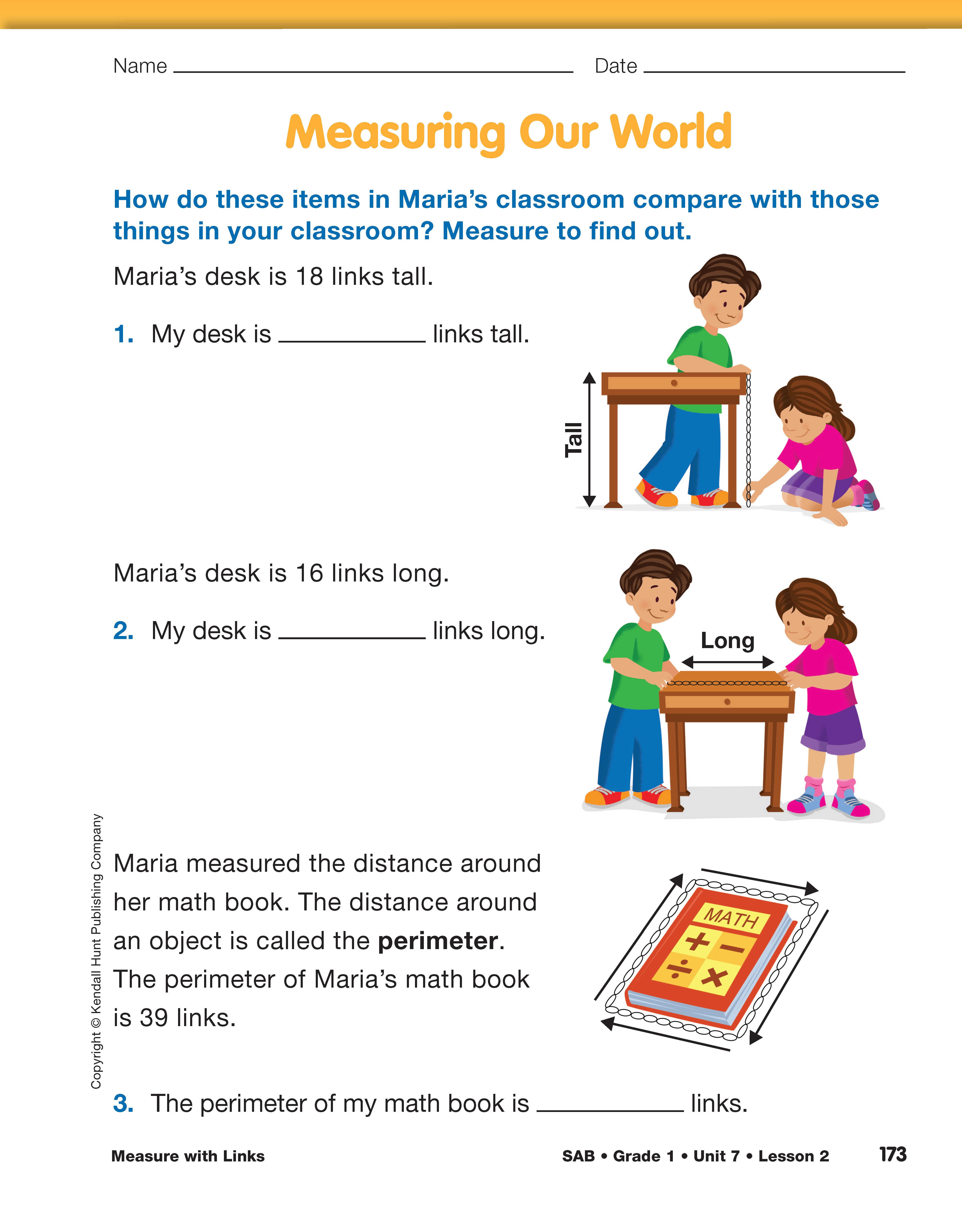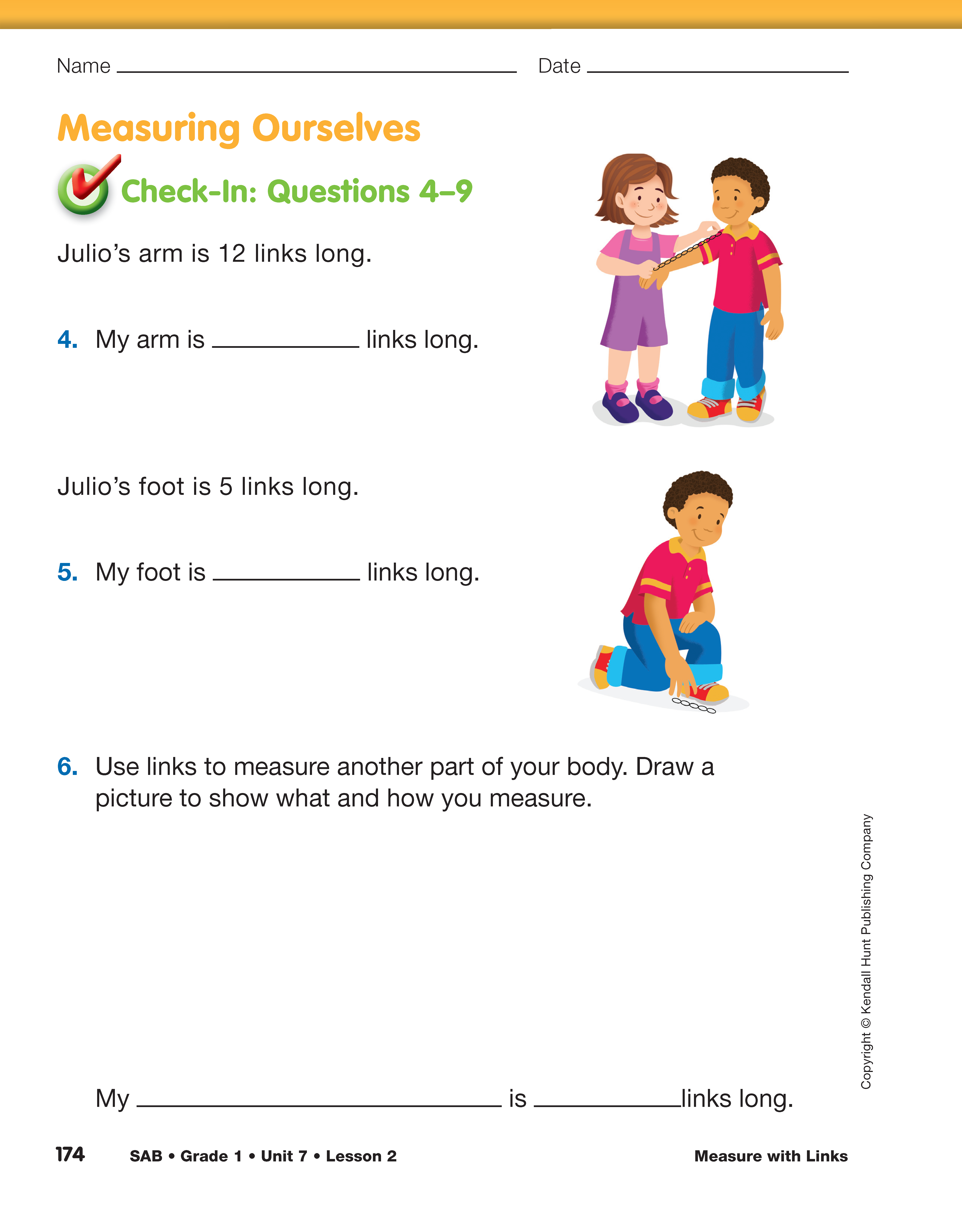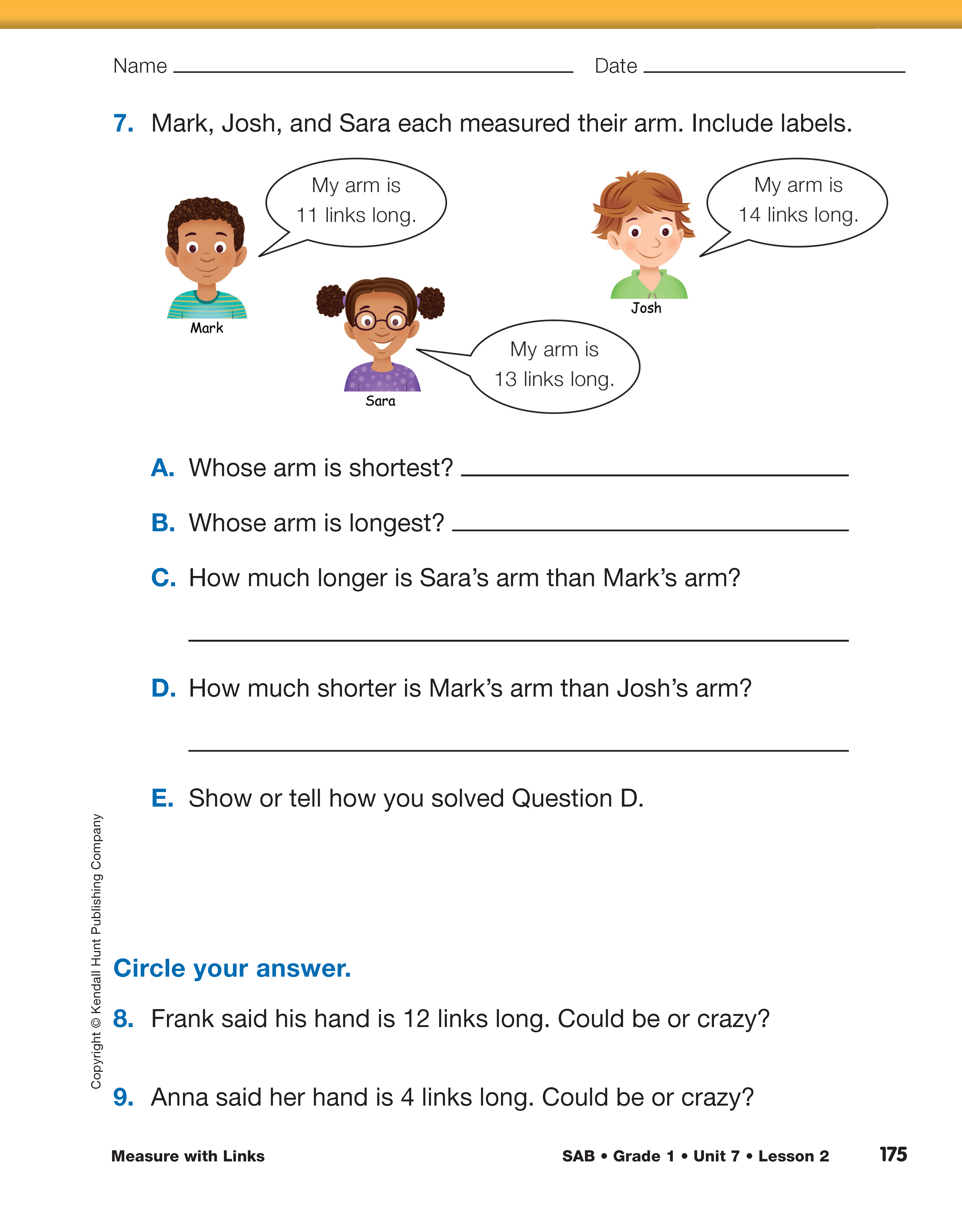Measure with Links
Est. Class Sessions: 1–2Developing the Lesson
Prepare to Measure with Links. Student pairs build 45-link chains, with groups of five in alternating colors. Have them compare chains with one another to make sure they are the correct length.
Have a student skip count using the highlighted numbers on the class number line. Then have a student skip count using the same numbers on a 45-link chain. Suggest additional numbers that require skip counting by fives or tens and counting leftovers by ones.
Select an object in the classroom such as your desk, the classroom calendar, or a window to measure with a chain of links. Guide a discussion about good ways to measure objects using a chain of connecting links.
Use one of the chains and ask:
Loosely dangle a chain across the middle of the desk or place it in a zigzag fashion.
Stretch the chain down the middle of the desk but not by the edge.
Starting at one corner of the desk, stretch the chain along the length at the edge stopping at the opposite corner.
Remind students of Math Practices Expectation 6, Use labels.
Guide the discussion to focus on these central ideas:
- Measurements should include the number of units and the unit (e.g., 23 links).
- Chains should be placed, as nearly as possible, in a straight line.
- Counting by fives and leftovers by ones is more convenient than counting all the links by ones.
- Sometimes a measurement will include a part of a link. Let students decide how they want to report these measurements. For example, some students might use "between 20 and 21 links"; others may decide an object is "closer to 21 links."
Measure Classroom Objects. Ask student pairs to find the height of their desks using the chain of links they assembled and record the measurements in Question 1 on the Measuring Our World pages. Ask pairs to compare their measurements. If measurements vary, ask if any difficulties in measuring occurred and how these difficulties could have affected their results. Students can measure the length in a similar fashion.
Ask students to compare their measurements to Maria's measurements in Questions 1–2 on the Measuring Our World pages.
Ask:
Discuss the strategies students used. For example, students may count up from the lower number to the higher number. Incorporate comparison language such as shorter, shortest, longer, longest, taller, and tallest into the discussion. Similar questions involving comparisons will be explored in Lesson 3 Rolling Along with Links.
Question 3 introduces the word perimeter. See Content Note. Demonstrate how to find the perimeter of a large book. Then have students find the perimeter of their Student Activity Book. Encourage students to compare their measurements and discuss their results.
Play Could Be or Crazy. To provide practice with estimating length, tell students that you will name an object and its possible length. Explain the two categories and tell students they need to decide if the given measurement is a reasonable one (could be) or if it is highly unlikely (crazy). One method to provide practice for all students simultaneously is to have students decide silently and give a thumbs-up if they think the measurement "could be" or a thumbs-down if they think it is "crazy."
Pose a series of statements such as the following:
Provide time for student pairs to complete Check-In: Questions 4–9 in the Measuring Ourselves section in the Student Activity Book. Observe students as they work. Each student will help his or her partner complete measurements but should record his or her own measurements.



















